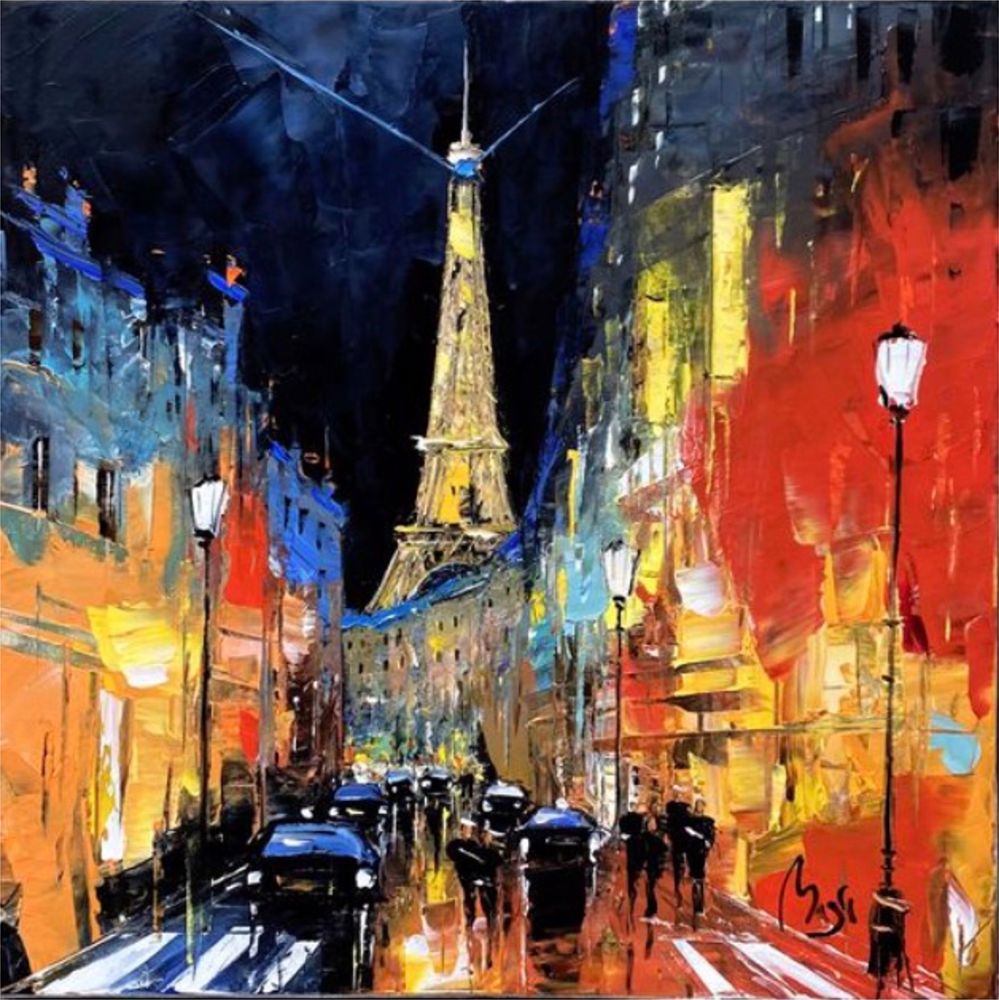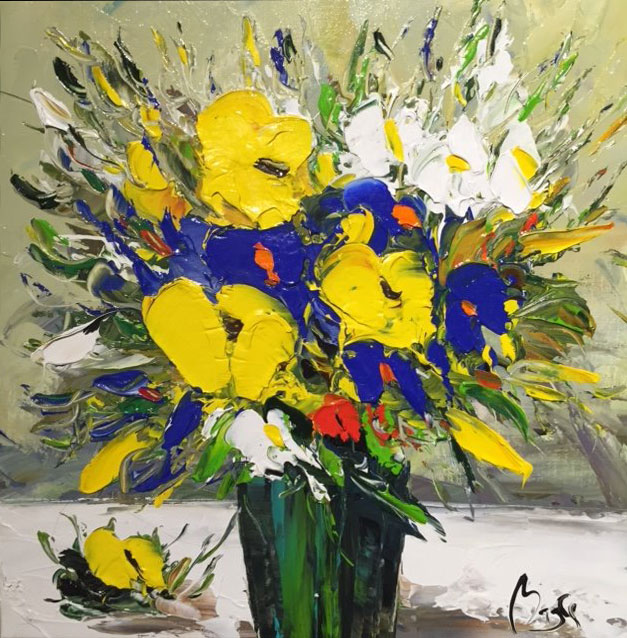Louis Magre
He was born in 1955 at the foot of the Montagne Sainte Victoire near the town of Aix en Provence. As a young man he had a passion for the arts and took many drawing and architecture classes to develop his skills. Initially he studied the figurative and portraiture styles but after a time the impressionistic styles of the French Masters such as Sisley, Pissarro and Monet absorbed his imagination.
After a lot of work perfecting the use of light in his paintings Magre now focuses more on impressionistic reliefs of the many different landscape settings that exist across France. The light of Provence permeates the atmosphere with the warm tones dear to Cézanne and Van Gogh. Across the area between Les Baux de Provence and Saint Paul de Vence, there are a variety of landscapes and vegetation that inspire him: red earth, the mistral blowing on the trees, the summer warmth, and the bright colors that come from wild flowers, sunflowers and lavender. In his relentless hunting of bright images, Magre still feels filled by what he sees and inspired by what he discovers, eternally in love with his land. He paces the scrubland from Châteauneuf le Rouge until Puyloubier, then bypasses the Sainte Victoire Mountain to return to Vauvenargues in the footsteps of Picasso … The red earth that collects gently on Tholonet road, close to Castle Black (the last home of Cézanne) is very useful for creating unique reliefs composed of natural materials. Like Monet he is particularly fond of deep water reflections so most of his landscape paintings have an element of water in them.
Similarly, his love of the Normandy coast and Britain allows him to capture the atmosphere and the smell of a beach at low tide, the flight of seagulls on a cloudy sky, nature so wild that the contrasts are amazing. He knows how to compose his palette gradient with unique tones to this region. He makes us breathe the sea air, feel the kelp at low tide, contemplate this unique light in the rolls of the waves, all uniquely transparent and yet mysterious.
In addition to his country side landscapes and florals he has developed a cosmopolitan interest which many of his collectors have encouraged. Slowly, but surely, more recently his paintings of Paris, have become popular because he exhibits the unusual angles at the corner of an alley on the Ile Saint Louis, by a barge moored in the snow at Pont Neuf, or within the Arenes de Lutece or stairs of Montmartre.
He regularly makes small trips outside France, to capture other perspectives of light and reflections. He enjoys rough and inaccessible reliefs (Capri, Procida … ) or Customs trails on the Brittany coast ( Brehat Island) . He likes to have fun with nature, so varied across France, and can emphasize the charm and essence of each : the fig tree with its distinctive foliage, cypress, which may bend but still resists the mistral, the unique sparkling yellow of bushes, thyme and rosemary, which he sometimes sprinkled in his paintings for the final touch … the beaches also inspire, especially creeks of Cassis, the island of Embiez, and the tip of Cape Negro whose secrets are reserved for those who can get there by the sea.
Louis Magre discovered New York quite late, around age 50. Under the charm, he moved there for three years to absorb it. He likes to get lost, wander from block to block, day and night, to capture, at the corner of a building, the perfect angle, a reflection in the rain, the sidewalks become mirrors. He has a weakness for Little Italy, the neon signs of Chinatown and the roof of the Empire State Building to capture perspectives that fascinate him. To enter the atmosphere and energy so special to New York, he surrounds himself with talented artists, photographers, musicians, architects, adventurers that guide, and infect him with the spirit that is New York. The reception impressed upon him, the freedom of everyone's mind, forgetting the eyes of others, so many reasons, drawn like a magnet to immerse him again and again in presenting his vision of New York. In moving away he can better let his impressionistic senses pull up the thirsty gigantism, creative madness and ethnic mix so particular in this unique city.
His everyday world is well organized thanks to the help and support of his wife in their "Bastide du gendarme ". It is a well hidden nest in the scrubland of sight. In his studio, he keeps mementos that belonged to his father, a sculptor: a moving way to keep in communication with those who have left.
Through his paintings, the viewer perceives bright summer colors and smell of Provence, the stillness on Brittany, the sense of each Bastide house. Louis Magre brings us paintings that speak to us.

2025 Show Originals
19 Pieces